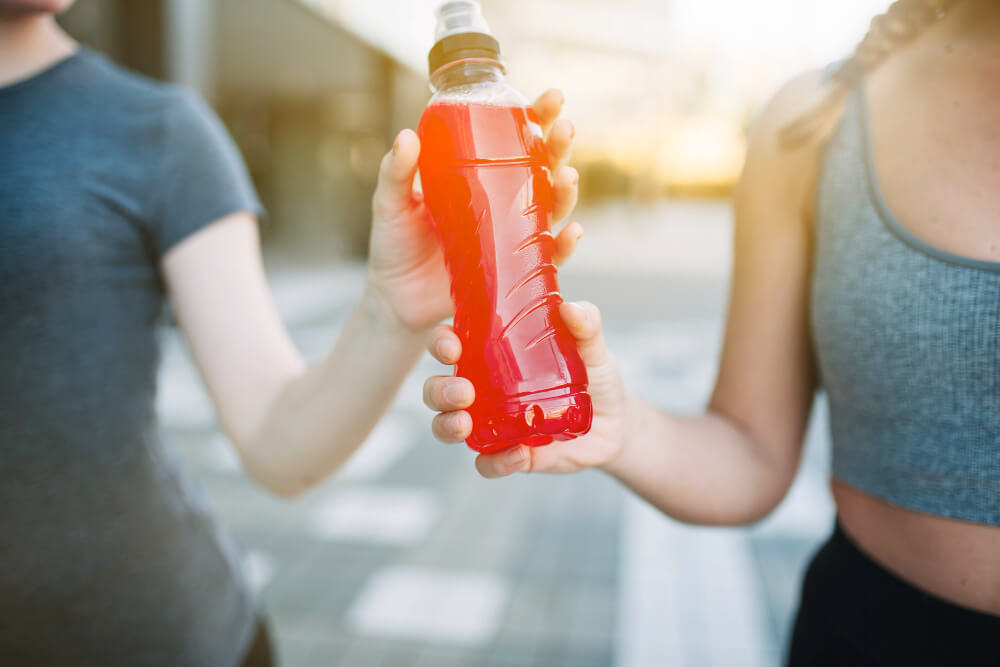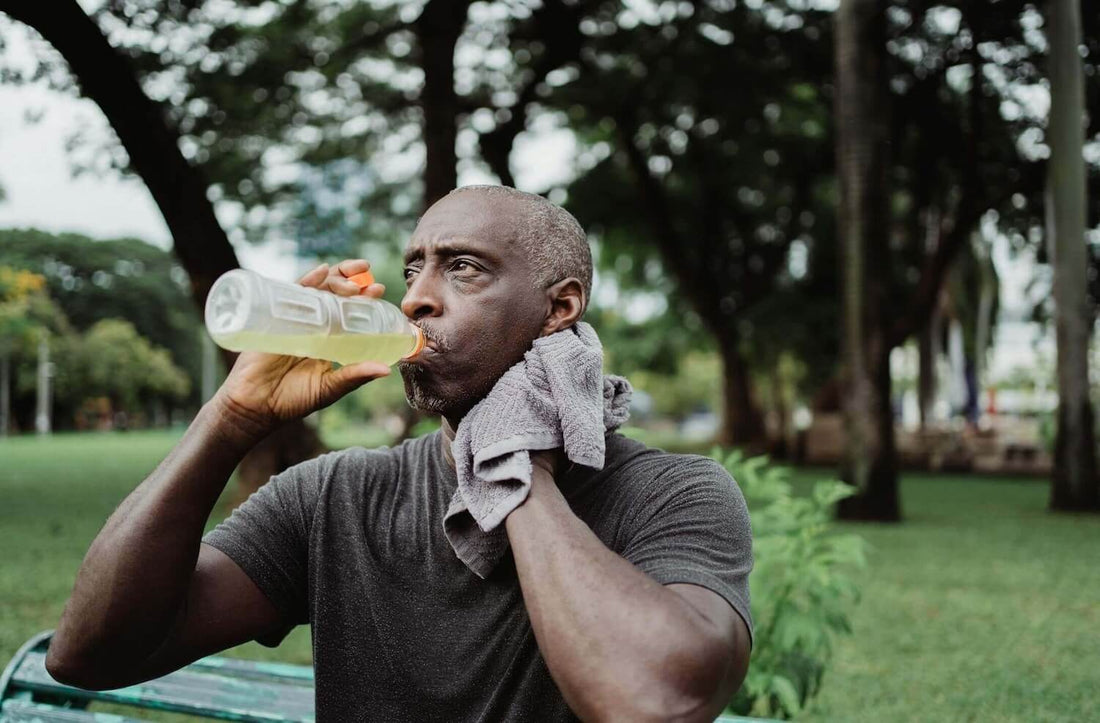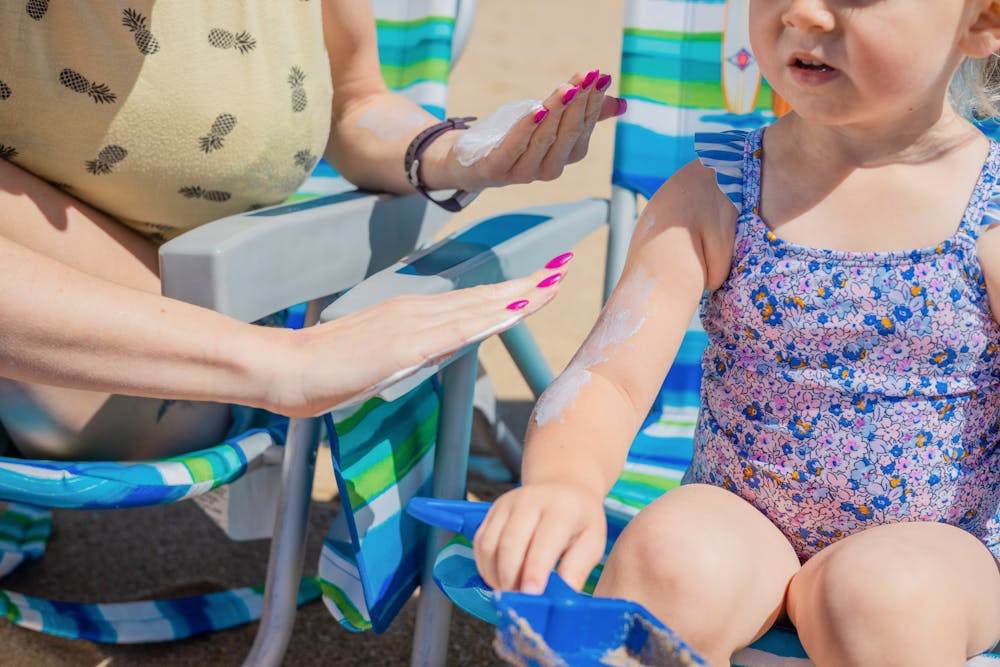Drenched in sweat after a workout, reaching for that brightly colored sports drink to replenish what we've lost. But have you ever stopped to read the ingredient list on those bottles? Artificial colors, high fructose corn syrup, mysterious flavoring agents, and enough sugar to make your dentist cringe. There's got to be a better way, right?
The good news is that making your own natural electrolyte drink at home is not only possible but surprisingly simple. You probably have most of the ingredients sitting in your kitchen right now. Let's dive into why you'd want to make your own electrolyte drinks and exactly how to do it.
Understanding What Your Body Actually Needs
Before we start mixing up homemade sports drinks, let's talk about what electrolytes actually are and why your body needs them. Electrolytes are minerals that carry an electrical charge and are essential for proper muscle function, nerve signaling, and maintaining fluid balance in your body.
The main electrolytes you lose through sweat are:
- Sodium (the big one – you lose the most of this)
- Potassium (crucial for muscle function)
- Magnesium (helps with muscle cramps and energy production)
- Calcium (important for muscle contractions)
- Chloride (works with sodium to maintain fluid balance)
When you sweat, you're not just losing water – you're losing these vital minerals. That's why chugging plain water after an intense workout sometimes leaves you feeling bloated or still thirsty. Your body needs those electrolytes replaced to properly absorb and use the water you're drinking.
The Problem with Commercial Sports Drinks
Let's be real about what's in most commercial sports drinks. Sure, they contain electrolytes, but they also come with a whole bunch of stuff your body doesn't need. We're talking about artificial colors that serve no nutritional purpose, preservatives to extend shelf life, and often way more sugar than necessary.
Many commercial sports drinks contain 20-35 grams of sugar per bottle. That's like drinking a soda! While you do need some carbohydrates during extended exercise, most of us aren't running marathons every day. For your average gym session or weekend hike, you probably don't need that sugar bomb.
Plus, there's the cost factor. Quality sports drinks can run $2-4 per bottle, which adds up quickly if you're active regularly. When you make your own, you're looking at pennies per serving.
The Basic Science Behind Homemade Electrolyte Drinks
Making an effective electrolyte drink at home isn't rocket science, but there is some basic chemistry involved. The key is getting the right balance of electrolytes and ensuring they're in a form your body can easily absorb.
Sodium is your primary concern because it's what you lose the most of through sweat. The general recommendation is about 200-300mg of sodium per 8 ounces of fluid for most people during exercise. You can get this from regular table salt, but sea salt or Himalayan pink salt often contain trace amounts of other minerals too.
Potassium is trickier to get in the right amounts because potassium chloride (the supplement form) tastes pretty awful. That's where natural sources like coconut water or a splash of fruit juice come in handy.
The addition of a small amount of natural sugar actually helps with absorption. Your intestines absorb water more efficiently when there's a little glucose present – it's called the sodium-glucose co-transport system. But we're talking about a teaspoon or two, not the sugar overload in commercial drinks.
Basic Natural Electrolyte Drink Recipe
Let's start with the simplest, most effective recipe that you can make right now:
Simple Citrus Electrolyte Drink:
- 2 cups water
- 1/4 teaspoon high-quality sea salt
- 2 tablespoons fresh lemon or lime juice
- 1-2 teaspoons raw honey or maple syrup
- Optional: 1/4 cup coconut water for extra potassium
Mix everything together until the salt and sweetener are completely dissolved. That's it! You've just made a natural electrolyte drink that rivals anything you can buy in stores.
This basic recipe gives you sodium from the salt, potassium from the citrus juice (and coconut water if you add it), and just enough natural sugar to help with absorption. The citrus also provides vitamin C and makes the drink actually taste good.
Advanced Natural Electrolyte Recipes
Once you've mastered the basic recipe, you can get creative with flavors and additional nutrients:
Tropical Coconut Electrolyte Drink:
- 1 cup coconut water
- 1 cup regular water
- 1/8 teaspoon sea salt
- 2 tablespoons fresh pineapple juice
- 1 tablespoon lime juice
- 1 teaspoon raw honey
This version uses coconut water as a natural source of potassium and has a delicious tropical flavor that makes hydration feel like a treat.
Green Power Electrolyte Drink:
- 2 cups water
- 1/4 teaspoon sea salt
- 2 tablespoons fresh lemon juice
- 1 teaspoon raw honey
- 1 teaspoon spirulina or chlorella powder
- 1 tablespoon fresh cucumber juice
The green powder adds minerals and antioxidants, while the cucumber provides additional electrolytes and a refreshing taste.
Herbal Electrolyte Infusion:
- 2 cups cooled herbal tea (try peppermint or chamomile)
- 1/4 teaspoon sea salt
- 2 tablespoons fresh lemon juice
- 1-2 teaspoons raw honey
- Fresh mint leaves for garnish
Using herbal tea as your base adds antioxidants and can provide additional benefits like the digestive support from peppermint or the calming effects of chamomile.
Ingredient Spotlight: What Makes Each Component Special
Let's break down why each ingredient in these recipes is there and what it brings to the table:
Sea Salt vs. Table Salt: While regular table salt will work, unrefined sea salt contains trace minerals like magnesium, calcium, and potassium that your body can use. Pink Himalayan salt is another great option that contains over 80 trace minerals.
Coconut Water: This is nature's sports drink. It's naturally rich in potassium, magnesium, and calcium. However, it's relatively low in sodium, which is why we still need to add salt to our homemade drinks.
Citrus Juice: Beyond just flavor, citrus juices provide potassium, vitamin C, and natural sugars. The acidity also helps with mineral absorption. Fresh is always better than bottled when possible.
Natural Sweeteners: Raw honey contains trace minerals and enzymes that processed sugar doesn't have. Maple syrup provides potassium and antioxidants. Even a small amount of natural fruit juice can provide the carbohydrates needed for optimal hydration.
Herbs and Spices: Fresh mint can aid digestion, ginger can reduce inflammation, and a pinch of cayenne pepper can improve circulation. These aren't just flavor enhancers – they're functional ingredients.
When to Use Your Homemade Electrolyte Drinks
Not every sip of water needs to be an electrolyte drink. Here's when homemade electrolyte drinks are most beneficial:
During Extended Exercise: If you're working out for more than an hour, especially in hot weather, your homemade electrolyte drink can help maintain performance and prevent fatigue.
After Intense Workouts: Post-workout is when your body is most receptive to replenishing lost minerals. A natural electrolyte drink can help speed recovery.
On Hot Days: Even if you're not exercising, hot weather increases sweat loss. Sipping an electrolyte drink throughout the day can help maintain proper hydration.
When You're Sick: If you've been dealing with vomiting, diarrhea, or fever, you've lost both fluids and electrolytes. A gentle, natural electrolyte drink can help with recovery.
During Travel: Airplane cabins are notoriously dehydrating, and travel stress can affect your body's mineral balance. Bringing your own electrolyte drink can help you feel better during long trips.
Tips for Making the Perfect Homemade Electrolyte Drink
Getting your homemade electrolyte drinks just right takes a little practice. Here are some tips to help you nail it:
Start with less salt: It's easier to add more salt than to fix an overly salty drink. Start with 1/8 teaspoon per cup of water and adjust to taste.
Use quality water: If your tap water tastes heavily chlorinated or has a strong mineral taste, it's going to affect your finished drink. Filtered water often works best.
Dissolve everything completely: Make sure all salt and sweeteners are fully dissolved before drinking. Sometimes it helps to mix them with a small amount of warm water first, then add the cold water.
Adjust for your sweat rate: If you're a heavy sweater, you might need more sodium. If you sweat lightly, you might prefer less salt and more focus on potassium-rich ingredients.
Make it taste good: If you don't like how it tastes, you won't drink it. Don't be afraid to experiment with different flavor combinations until you find ones you actually enjoy.
Storage and Preparation Tips
One of the beauties of making your own electrolyte drinks is that you can prepare them fresh when you need them, but here are some storage tips:
Fresh is best: These drinks are most effective when consumed fresh, but they'll keep in the refrigerator for 2-3 days.
Make concentrates: You can make a concentrated version of your favorite recipe and store it in the fridge, then dilute with water when you're ready to drink.
Freeze in ice cube trays: Make your electrolyte drink and freeze it in ice cube trays. Drop a few cubes into plain water for a quick electrolyte boost.
Batch prep: Make larger quantities and store in mason jars in the fridge. Just give them a good shake before drinking.
Customizing for Your Specific Needs
Everyone's electrolyte needs are different based on factors like body size, sweat rate, exercise intensity, and climate. Here's how to customize your drinks:
For Heavy Sweaters: Increase the salt content and consider adding a pinch of potassium chloride (available at health food stores) for extra potassium.
For Light Sweaters: Reduce the salt content and focus more on flavor and natural sugars from fruit juices.
For Endurance Athletes: Add more natural carbohydrates through fruit juices or a small amount of raw honey to fuel longer activities.
For Recovery: Add ingredients like tart cherry juice (anti-inflammatory) or a small amount of protein powder to support muscle recovery.
The Cost Comparison
Let's talk numbers for a second. A typical commercial sports drink costs $1.50-$3.00 per bottle. Your homemade version costs roughly:
- Water: essentially free
- Sea salt: about $0.02 per serving
- Lemon juice: about $0.15 per serving
- Honey: about $0.10 per serving
- Total: approximately $0.27 per serving
That's a savings of over 80% compared to store-bought versions, and you get a cleaner, more natural product.
Common Mistakes to Avoid
Too much salt: This is the biggest mistake people make. Start with less than you think you need and gradually increase.
Not enough flavor: If your drink tastes like salty water, you won't want to drink it. Don't be afraid to add more citrus or natural sweetener.
Making it too complicated: Some of the best electrolyte drinks are the simplest ones. Don't feel like you need to add every superfood powder in your pantry.
Ignoring your body's signals: Pay attention to how you feel when drinking your homemade electrolyte drinks. If you're getting headaches or feeling worse, adjust the recipe.
The Bottom Line on DIY Electrolyte Drinks
Making your own natural electrolyte drinks at home is one of those simple swaps that can make a real difference in how you feel and perform. You get complete control over what goes into your body, save money, and often end up with something that tastes better than anything you can buy in stores.
The key is to start simple, pay attention to how your body responds, and adjust accordingly. Your perfect electrolyte drink might be different from someone else's, and that's exactly as it should be.
Remember, staying properly hydrated isn't just about drinking water, it's about maintaining the right balance of fluids and minerals that your body needs to function at its best. With these natural, homemade electrolyte drinks, you're giving your body exactly what it needs without any of the unnecessary additives found in commercial products.
So next time you're heading out for a workout or spending time in the heat, skip the neon-colored sports drinks and mix up something natural instead. Your body will thank you for it.




